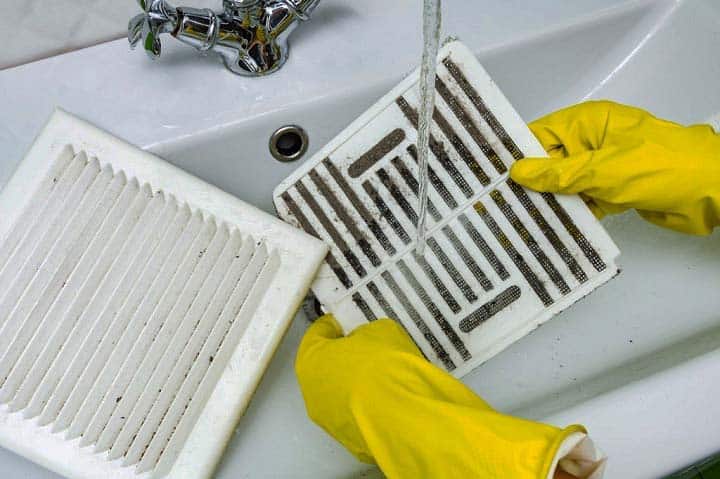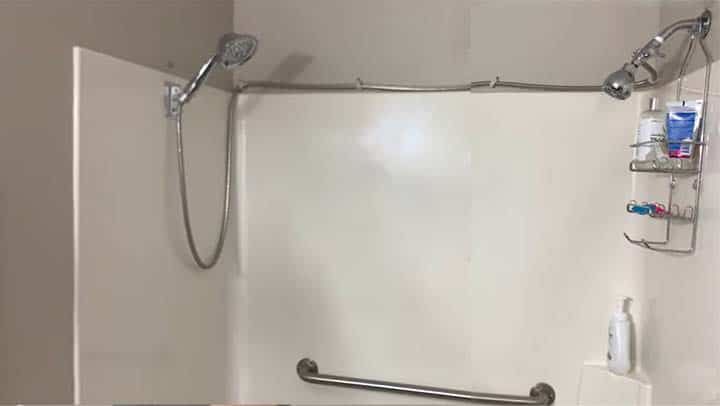Generally, all shower drains have a U-trap in the drain pipe. This is because a shower drain trap keeps the bathroom safe and fresh by stopping the toxic gases from going up to the bathroom. The gas not only makes the bathroom stinky but is unhealthy and risky as well.
In most buildings, it is mandatory for a shower drain to have a trap. Not only is it mentioned by the building code but it also keeps toxic gases and organisms away preventing them to rise up to the house. This is why a shower drain needs a trap.
To discuss whether a shower drain needs a trap or not, we are here with the article. We will elaborate on the necessity of a shower drain trap, and discuss other factors related to it. Thus to make concepts clear, stay with us and read the article.
How Does a Shower Drain Trap Work?
A shower drain trap has different parts that make the entire mechanism efficient. So let’s start with the parts, and talk about the function of each part. All these shower drain traps work together to stop gases, animals, or substances from traveling up to the pipe.
Let’s learn which part of the part does what job:
The Inlet of Pipe:
This is the visible part that you see on the floor. When you turn on the water in the bathroom and the floor is wet, the water first goes to the inlet to travel the drainpipe to the trap. So the water first travels through the drain hole to the inlet. The inlet, therefore, is the initial part of the drain trap.
The Downward Pipe
The downward bent is the main part of the trap. It has either a U-bent or a P-shape. This is what accommodates enough water to give an airtight trap between the inlet and sewer portion of the trap. Now when the water travels down the inlet, it eventually replaces the water that the trap was holding. This, the water goes down the pipe.
So the trap is always holding some water and this is what creates the ‘trap’. If the sewer gas, substances, or any animals try to go up to the pipe, the bent U or P-shape and the water restrict the movement. Thus no gas or animals can travel up through the pipe to your residence.
For cleaning and repairing, the trap features a cleanout just in the middle of the P-trap to drain out the water.
The Outward Pipe
The final part of the trap is from where the water travels to the sewer line. The pattern of the trap is determined by its name. For example, a U-shape, P-shape, or S-shape has a shape as the name denotes. All of them work in a similar way to each other and the water travels down to the sewer.
Does Every Drain Need A Trap? (2 Main Benefits Of Shower Drain Traps)
You have understood the mechanism by which a shower drain trap works. But do you really need a shower drain trap? This question may pop into your mind. Let me clear out all your confusion regarding the matter.
The straight answer is yes, a shower drain needs a trap. In fact, it is a legal requirement in most states that your bathroom should have a shower drain trap. Despite the legal requirement, it is always wise to install a shower drain trap. Because it has tremendous benefits.
The two main benefits of using a shower drain trap are given below:
1. Keep Gases Away
When wastewater travels down a pipe, it releases toxic gases on its way to the sewer. Even after reaching the sewer line, toxic gases are released. These toxic gases not only make the house stinky but are unhealthy as well. Some gases like methane and hydrogen sulfide are flammable. A few gases also decrease the level of oxygen in the air. These gases are dangerous and can cause accidents.
Fortunately, the drainpipe trap stops the toxic gases from traveling up to the house again. The shape of the trap and water restrict the gases from riding up to the house. This keeps the bathroom healthy and safe.
2. Keep Animals Away
If the bent shape was missing, small animals like rats, mice, even snakes can ride up to the house through the pipe. It is easy for them to ride up if the pipe is straight and there is no water trap.
But drain pipe traps and the water stops the animals from riding up. It restricts the movement of animals upwards.
These are the main two reasons why using a shower drain trap is necessary. The reasons may seem minor but are crucial if these things actually occur in your residence. Therefore to stay safe and protected, you must install a shower drain trap.
4 Easy Steps To Install Shower Drain Trap: Do It Yourself
To use the trap effectively, you have to install it correctly. If you know how to install it properly, you will get the best results. And if you think it is complicated to install shower drain traps, you are wrong. If you know the process, you can do it easily and enjoy the benefits.
To make the process simple for you, we are here with the installation process of a shower drain trap:
Step 1: Make The Subfloor Around The Drain Ready
Before you install a drain pipe trap, you have to shape and trim the subfloor around the drain using an electric saw. Cut it in 12 by 12 inches dimensions. Do the cut above the floor plates so that you can easily nail down the subfloor again once you do the cut.
The cut should not be deep as it may damage the pipe and floor.
Step 2: Make Some Space Surrounding The Drain
You have to open and make some space under the area where you made the cut using a pry bar. For installation, you have to cut the drainpipe. To do so, first, measure the P-trap. This measurement would be the distance from the drain base to the drainpipe where you have to make the cut.
Step 3: Fix The Trap To The Drainpipe
You need a connector and glue to attach the trap to the drainpipe. Now, across the horizontal part of the drainpipe, fix the P-trap using the glue and connector. In this way, the opposite end of the P-trap would face upwards directing beneath the drain of the shower.
Step 4: Fix The Floor
The initial stage of installation is done. Now you have to reinstall the floor. Simply place the square part (that you have cut) into the floor. Now measure and note the distance between the drainpipe base (or subfloor) to the P-trap.
Now take a pipe of the same sphere area as the P-trap and cut the length that you have measured. Then connect the pipe to the P-trap to reconnect the shower drain with the pipe. Leave it for an hour to let the glue dry out. And the bathroom is ready to use.
The process was simple, wasn’t it?
Related Questions:
Should You Put Trap On A Shower Drain?
Yes, you must put a trap on a shower drain. The soap scum and chemicals with water release toxic gases as they reach the sewer line. These toxic gases can move up if the drainpipe has no trap. Similarly, animals can travel up if there is no trap.
To stay safe and protected from toxic gases and organisms, you should put a trap on a shower drain. It restricts gases and organisms from riding up to the house through the pipe.
How Far Can Trap Be From Shower Drain?
The position of the bent or the trap matters for effectively letting the water go down. To prevent gases and organisms from moving up, the position of the trap from the drain-pipe matters.
Ideally, the trap should not be farther than 15 inches from the shower drain. If the trap is lower than 15 inches, the force of water can make it go out of the trap. Using a deeper trap can also clog it up making it difficult for the trap to function efficiently.
Where Is P-trap In The Shower Drain?
The P-trap is placed down the drain-pipe hole. The pipe can be a single pipe having a P-bend. Otherwise, you can fix an extra P-trap to the main drainpipe. Just after the inlet, you have to fix the P-trap that is the main downward bent which goes to the outlet and finally to the sewer line.
Therefore, the P-trap is placed just beneath the drain-pipe hole after it enters the inlet.
Why Is S-trap For Shower Drain Is Illegal?
Not everywhere you can use an S-trap. Most people use a U-trap or a P-trap in the shower drain. There is a reason why S-trap is not suitable for this purpose.
The S shape is not suitable for working as a trap. The trap may make the water leak out from the trap. As the layer of water is removed, the trap doesn’t work efficiently. Thus the toxic gases can easily rise up and get released to the house causing difficulties and risks.
This is the reason why using an S-trap is illegal in shower drains.
What Happens If You Don’t Vent A Shower?
Without a vent, a shower won’t function properly and fail to drain the water. Poor ventilation also causes blocks and clogs in the drain releasing toxic gases and odor. These odors and gases can rise up to the house if the shower is not vented.
When properly vented, the gases leave the system easily keeping the shower in a good condition.
Conclusion:
It is clear that a shower drain needs a trap. The trap is what keeps your bathroom and house healthy and safe. Without it, not only the bathroom becomes stinky but can cause several accidents. Therefore, you must install a trap in the shower drain.
I am James Martin, An professional plumber with more than 16 years of experience. The main purpose of my writing is to share my experiences of helping others. Be with me and explore bathroom plumbing, installation, cleanness ideas, and many more.




